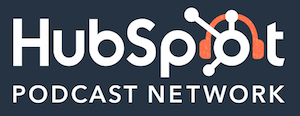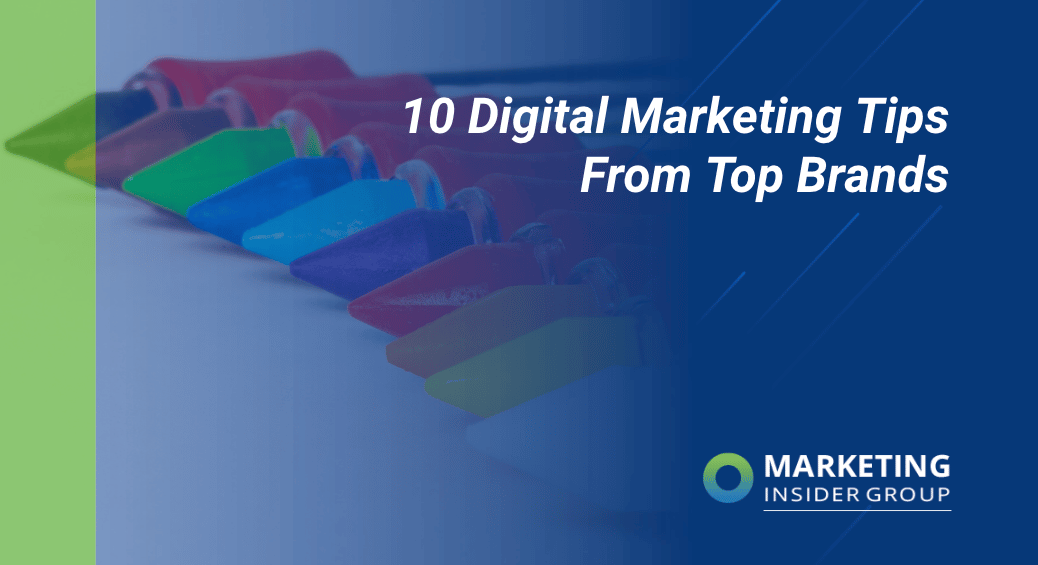
There is no doubt that digital marketing is crucial when it comes to the success of any business no matter what industry you are in. So what are the best digital marketing tips and tricks that we can apply from bigger (better funded) brands?
The pandemic has pushed many businesses to see the value in digital marketing to attract new customers. According to eMarketer, digital marketing takes up 54% of marketing budgets and has grown by 36% since 2020!
Why? Because digital marketing is rthe best way to reach new customers. And the best part, is that digital insights allow us to directly see what customers want. With the increase in digital marketing data, tools, analytics and digital marketing software, it is far easier to see actual online customer behavior… and cater to it! Digital marketing has enabled businesses to gain treasured insights into customers’ minds.
When implemented in the right way, digital marketing will enable your business to target and reach its customers, qualify new ones, increase sales, and experience lasting growth.
These digital marketing approaches will make your business visible to your existing customers online and connect you with new ones. Let’s dive in to understand the 10 best digital marketing tricks you can use today to grow your business.
What is Digital Marketing Today?
Digital marketing is the use of the internet, social media platforms, websites, emails and all our electronic devices to get your business found by new customers.
Digital marketing is trending upwards as more people use the internet and social platforms to get work done and play.

It today’s digital world, marketing is about connecting with your prospective customers in the right place and at the right time, earning their trust, educating them on the latest trends and then positioning your business as a solution to their needs.
Digital marketing strategy encompasses a range of marketing activities such as content marketing, email marketing, search engine optimization, mobile marketing and more.
Digital Marketing includes:
- Search Engine Marketing (often referring to as Paid Search or PPC for Pay-per-Click)
- Search Engine Optimization (SEO)
- Social Media Marketing
- Content Marketing
- Audio and Video Marketing
- Email Marketing
- Digital Display Advertising (Banner ads)
- Native Advertising
- Influencer Marketing / Advocacy Marketing
- Affiliate Marketing
- Pay-per-Lead (PPL) sometimes referred to as Content Syndication
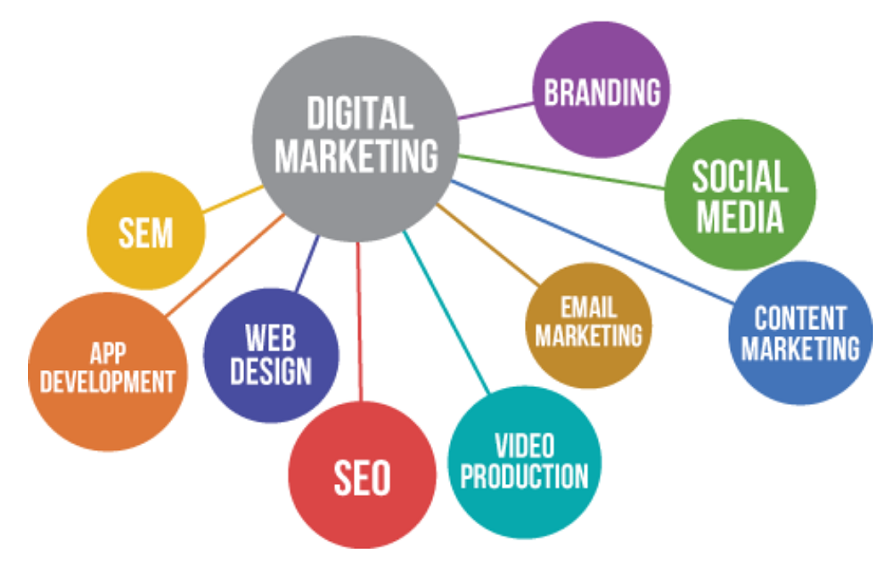
Why You Need Digital Marketing Today
Digital marketing is about getting found by your target audience based on the search terms they are using, the content they are consuming on the digital channels where they spend their time.
This chart shows the dramatic decline of traditional media consumption and the amazing increase in time we are all spending on digital channels from 2011 to the present.
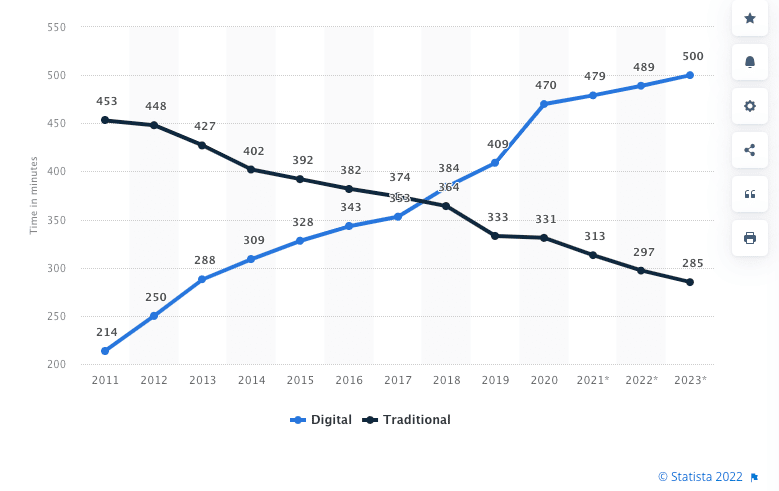
That’s why the future of marketing is digital. Brands need digital marketing in order to achieve their marketing goals in a digital world. Those marketing goals may include awareness and reach, lead or revenue conversion, customer loyalty and retention.
Tp help you see the benefits of Digital Marketing, we’ve compiled this list of the best digital marketing tricks used by the best brands but that can be applies to any size company or budget.
10 Best Digital Marketing Tips From Top Brands
- Combine SEO and Content Marketing
- Have a Visible Presence on Relevant Social Media Platforms
- Optimize Your Website for Mobile-First Browsing
- Use the Right Digital Marketing Tools
- Be Awesome at Design
- Create and Grow an Email List
- Spend Wisely on Digital Advertising
- Visual Content
- Closely Watch Your Analytics
- Integrate Strategies and Campaigns Across Channels
1. Combine SEO and Content Marketing
SEO is certainly nothing new. For a long time, SEO was a function of keywords and coding. Then Google got smarter. Google learned that SEO is about rewarding brands with helpful content.
That’s why combining SEO (what questions do our customers ask) and Content Marketing (what answers do we provide) is one of the most effective of the marketing trends we’re going to see in the future of marketing.
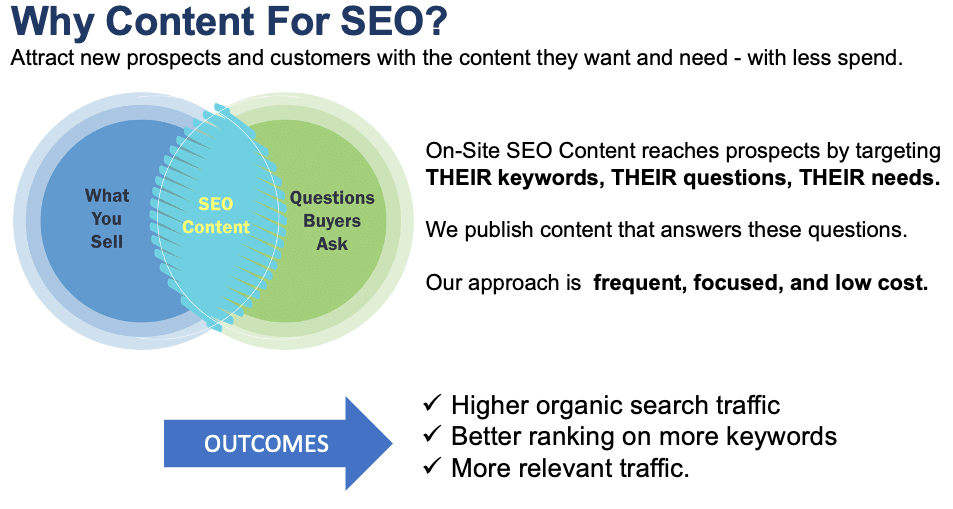
Today, most of the metrics included in Google’s algorithm have to do with content (even Google admits this) and the engagement you win through the distribution of great content. Using various types of content (visual, text, video, infographics, audio, etc) does much better than using a single type of content.
More content – As more businesses embrace content marketing, competition continues to get tougher. Everything you do online is drowned in noise and information overload. In order to get ahead, every business needs to publish better and more content.
According to HubSpot data, publishing at least once a week is critical for ROI and ROI drops pretty precipitously when you publish less frequently. However, it’s not about quantity vs. quality, but an ideal mix of both.
Valuable content – Content should be entertaining, informative, and empathetic. Valuable content answers the search intent or the question asked of the search engine, but it also is structured in a way to encourages engagement such as subscriptions to your email, sharing, comments, and other actions that contribute to ROI.
Original content – Content can be audio, video or text but when you decide to use one or all of these digital content, ensure it is good and original. If you can’t create unique, compelling and good content by yourself, you can hire an expert to create content for your website and social media platforms. This is where you will need a powerful content marketing plan like never before.
Appropriate content – As you can see from this infographic from Occam’s Razor, you need to produce content that’s right for each stage in the conversion process (and your metrics need to match your goal with each piece of content).
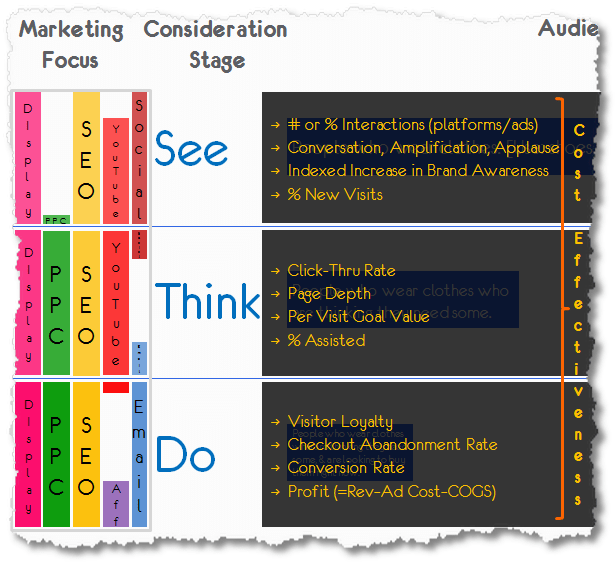
Knowing where a visitor is in the conversion process isn’t always easy, but, if you’ve done a good job of coding content (applying tracking codes so you know what type of content drove them to visit your site) and use tools that let you track where visitors have been before, you can make an educated guess as to what content they need.
By delivering the right content at the right time, you’re more likely to convert visitors to buyers.
Reach is important. The more visitors you bring to your site, all things being equal, the higher your ROI. This is one of the reasons it’s important to have several social platforms and have links on your content so visitors can easily share your content. You should share your content once it’s published and here’s a schedule we recommend:
2. Have a Visible Presence on Relevant Social Media Platforms
Being seen online is the key to success for every business, especially in today’s world where almost all businesses have gone digital. It is one of the ways to stand out from the crowd.
For this reason, you need to build your online presence on social media networks of relevance. Note that there are plenty of social networks available but you need to identify where your customers spend most of their time and target them there. Pick those that are relevant to your business and prospects and build your online presence there.
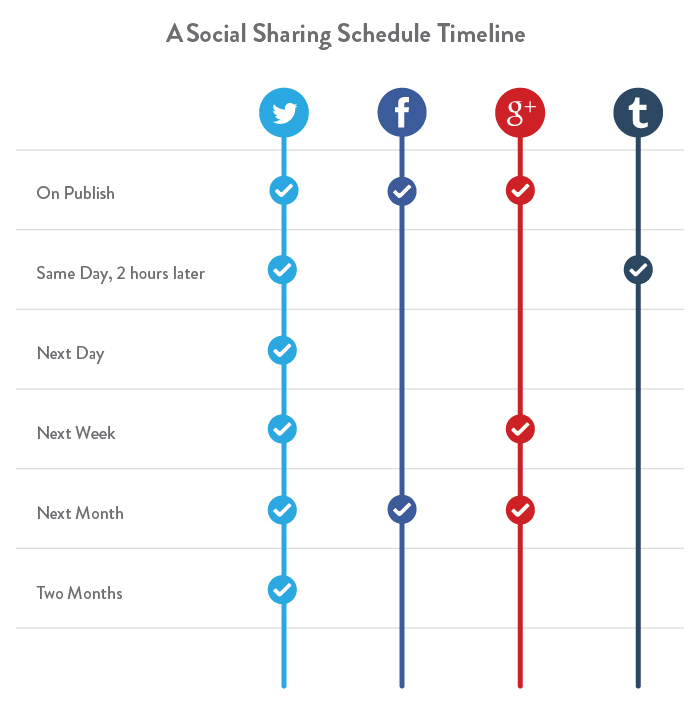
As my daughter will tell you: share more than once on Instagram and she’ll unfollow you! In addition to sharing your own content, you should share content created by other great companies/ experts. Many experts recommend you promote or sell in no more than 20% of your content. At least 80% of your social shares should be valuable content in your industry.
And keep in mind that social media is not the place to be pitching your products (unless you’re last name is Kardashian). Social media is for sharing and engaging. While social networks are a great way to understand what content resonates with your audience, social media is not the best digital marketing channel to demonstrate business growth.
3. Optimize Your Website for Mobile-First Browsing
Many consumers in the US and around the world only access the internet from their mobile phone. So you need a website that loads quickly, works across all types of mobile devices, and looks amazing in the process.
You also need to make sure your content is mobile friendly, and that your website and social media networks are accessible on desktops as well as mobile devices. One thing we are always looking to improve is the reader experience. We are constantly testing which fonts, colors, and font sizes, for example, are best for reading on a variety of small mobile screens. We are also always optimizing for page load times.
So, it is crucial to make your website and content accessible to users on all screen sizes. Update your website design using the latest trends and color schemes.
4. Use the Right Digital Marketing Tools
Digital marketing is an amalgamation of different strategies aimed at a plethora of channels, like SEO, PPC, social media, and so on.
In order to ensure that you have an integrated marketing mix, you need the right digital marketing tools to help you run effective campaigns. You also need to develop expertise in using them and applying the insights in the right context.
For example, you need a CMS to power the content on your website (we use WordPress just as 60% of all websites do). You also need email marketing tools to distribute your content (we use Mailchimp). You might use a social media management platform to manage the social distribution (we use Hootsuite). You should also consider lead generation, marketing automation and CRM. Many smaller companies use Hubspot for all of these functions. Larger companies often use Adobe / Marketo for these functions.
We use a landing page service called ConvertFlow for lead generation and I track leads using a sophisticated google sheet. Works fine for us! You’ll also want to use an analytics tool like Google Analytics to understand your website details. And of course there’s a whole world of Marketing Technology (MarTech) that larger companies are using.
5. Be Awesome at Design
Design underpins much of what makes digital marketing success. Whether you’re designing a website, a landing page or creating an image for your website, ad, or infographic, you need to have good design skills. Not all of us are whiz kids when it comes to design, but there are some tools to help.
Canva – is a great tool for creating social media images whether you need them for your profile or as images to include in posts. One aspect of Canva I really like is the templates that help design great looking images even if you know nothing about layout or what fonts go together. They’re constantly adding new images and tools, such as infographic templates, to help you out.
Photoshop – granted it’s expensive, but Photoshop is a great design tool.
6. Create and Grow an Email List
Email is still an effective driver of digital marketing ROI. In fact, email delivers about $36 in ROI for every dollar spent! But you gotta do it right.
Make sure your website includes an email newsletter sign up form. Deliver valuable content to your subscribers not just promotion. Tell stories. We use our email lists to mainly share our content. We also do email nurturing to our leads and convert quite a bit through this process.
The trick is to balance content, stories and calls to action. For example, our first nurture email just tells you a little something personal about me (“I have 4 kids and they ask lots of questions. Do you have any questions for me?)
But then in later emails I share some of our top stories, explain what we sell, and ask people to contact me.
7. Spend Wisely on Digital Advertising
Now listen, lots of people are spending on digital ads. Very few are able to show any ROI at all. (If you are, please let me know. I’d love to tell your story!)
Digital advertising, including PPC (pay per click) Google Ads, YouTube Ads, social media advertising on platforms such as Facebook, Instagram, LinkedIn, and Twitter, Snapchat, Tiktok are all things you could test in order to deliver digital marketing success.
We’ve tried it all. The one approach we have found that brings in relevant traffic, engaged visitors, and converting leads is what we call contextual content promotion. We find your target audience wherever they are on the web and we serve them an ad. But not an ad for your product. And ad for your content.
Then we gather that audience into a re-targeting pool. And we hit them with offers like e-books, webinars, free guides. This allows us to deliver CPCs that are 80% less than average and CTRs that are 4-5 times higher than average.
8. Add Visual Content To Your Digital Strategy
A picture is literally worth a thousand words, and people will share them more often than text-based content. We love infographics because they can be attractive, engaging and display lots of information. Our brains can process pictures much quicker than text. 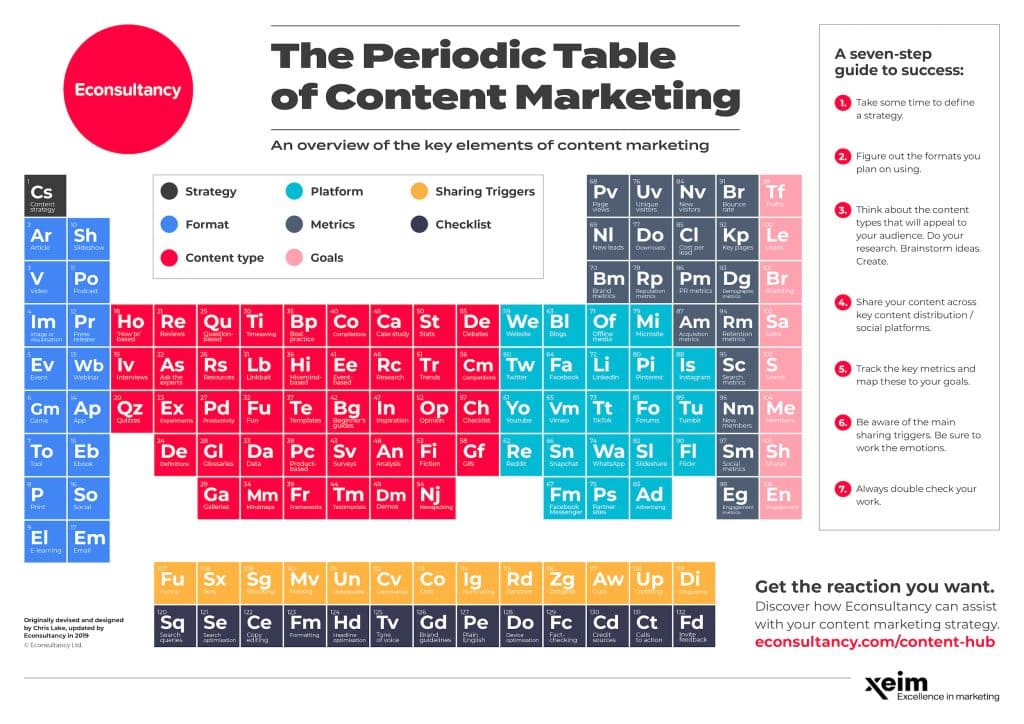
Here are some examples of the best content infographics that awesome marketers have created and used to resonate with their audience. I also created these digital marketing cheat sheets. All of these are examples of visual content in digital marketing.
Some other examples include Social media graphics, Videos, Webinars, even the title image of our blog posts is designed and branded in order to set us apart from just any old thing you might read on the web.
9. Closely Watch Your Analytics
Almost the other end of the spectrum from creativity is analytics, but that’s exactly the combination you need for digital marketing success. Google Analytics is perfect for understanding critical elements of your website and how visitors navigate through it. If you’re trying to learn how to gain insights from Google Analytics, you can use the Google Data Studio to give it a test drive using data from Google’s e-commerce site.
For analytics outside of Google Analytics, a number of great tools exist. You can use individual analytics from each social network (ie. Facebook, Pinterest, etc), you can bring them all to one place by using a dashboard programs, or you can pay for more powerful tools to gain more insights.
10. Integrate Strategies and Campaigns Across Channels
Integrating across these tactics can be really challenging, especially in a larger firm where different teams may manage different platforms or where different ad agencies handle different aspects of marketing, such as content marketing, paid, and social. But, integrate you must to achieve true digital marketing success.
Let’s talk about how you go about integrating across these tactics that contribute to digital marketing strategy success.
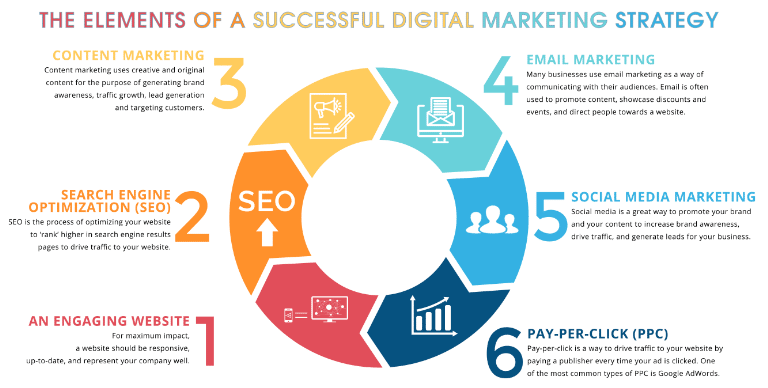
Source: On Top Visibility
Strategic planning
The first step in integration is to have a strategic plan. Don’t have one, here’s a link to creating a digital marketing plan.
Coordination comes from strategic elements such as messaging, but even elements such as mission and goals help integrate efforts by creating an umbrella under which teams create posts, infographics, and the metrics used to assess them.
Start by simply identifying your digital marketing goals, what gaps you need to fill and who can help to fill them,
Content Council
Bringing everyone together is important. Everyone should have time to share elements they’re working on and get input from the group about ways to extend a particular effort across multiple platforms and creative efforts.
The main goal is to help brainstorm ways to fill your content gaps. Once you align on your strategy, getting everyone on board can go a long way to bringing everyone together.
A Master Plan
There needs to be a point person in charge of digital marketing success and that person is key to coordinating efforts across teams. Some organizations have an approval process where the top person must approve everything before it goes live. I’m not a big fan of this approach because it can slow the process down and, unlike traditional advertising, digital media is dynamic and data-driven.
A better strategy is to use a digital master content calendar to allow everyone to post what they’re working on, the assets they plan to use, and when the creative effort will go live. But, it’s not enough to post plans. You can use your content council to review these plans and make adjustments.
For instance, reusing a graphic created by another team not only saves time and money, it creates a visual that helps consumers (customers and potential customers) associate the two efforts–and increases frequency.
Your Turn
Digital marketing is a must for your business success, and we hope our list of tricks will keep you headed in the right direction. These tricks are tried and tested and when you implement them effectively, you can get ahead of your competition.
If you want your business to succeed online in today’s digital world, then these digital marketing tricks will come in handy. What tips would you add to this list? Tell us in the comments below!
Looking to implement the best digital marketing tips for your business. We can bring more traffic and leads to your website with weekly blog articles, a full year content plan, and monthly reporting? Set up a quick call, so we can get started today.
The post 10 Digital Marketing Tips From Top Brands appeared first on Marketing Insider Group.

 In this episode of the Duct Tape Marketing Podcast, I interview Jeffrey Shaw. Jeffrey
In this episode of the Duct Tape Marketing Podcast, I interview Jeffrey Shaw. Jeffrey 